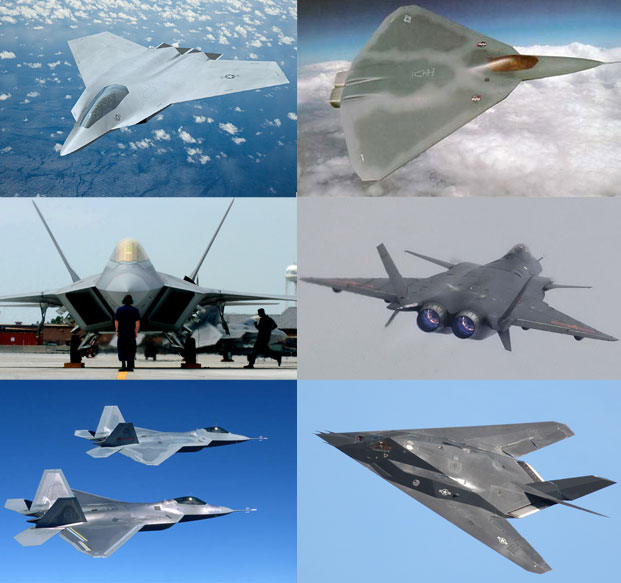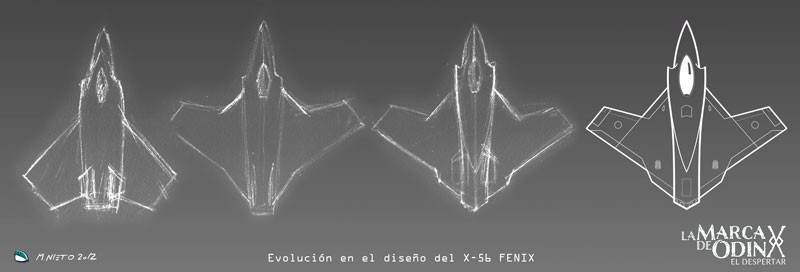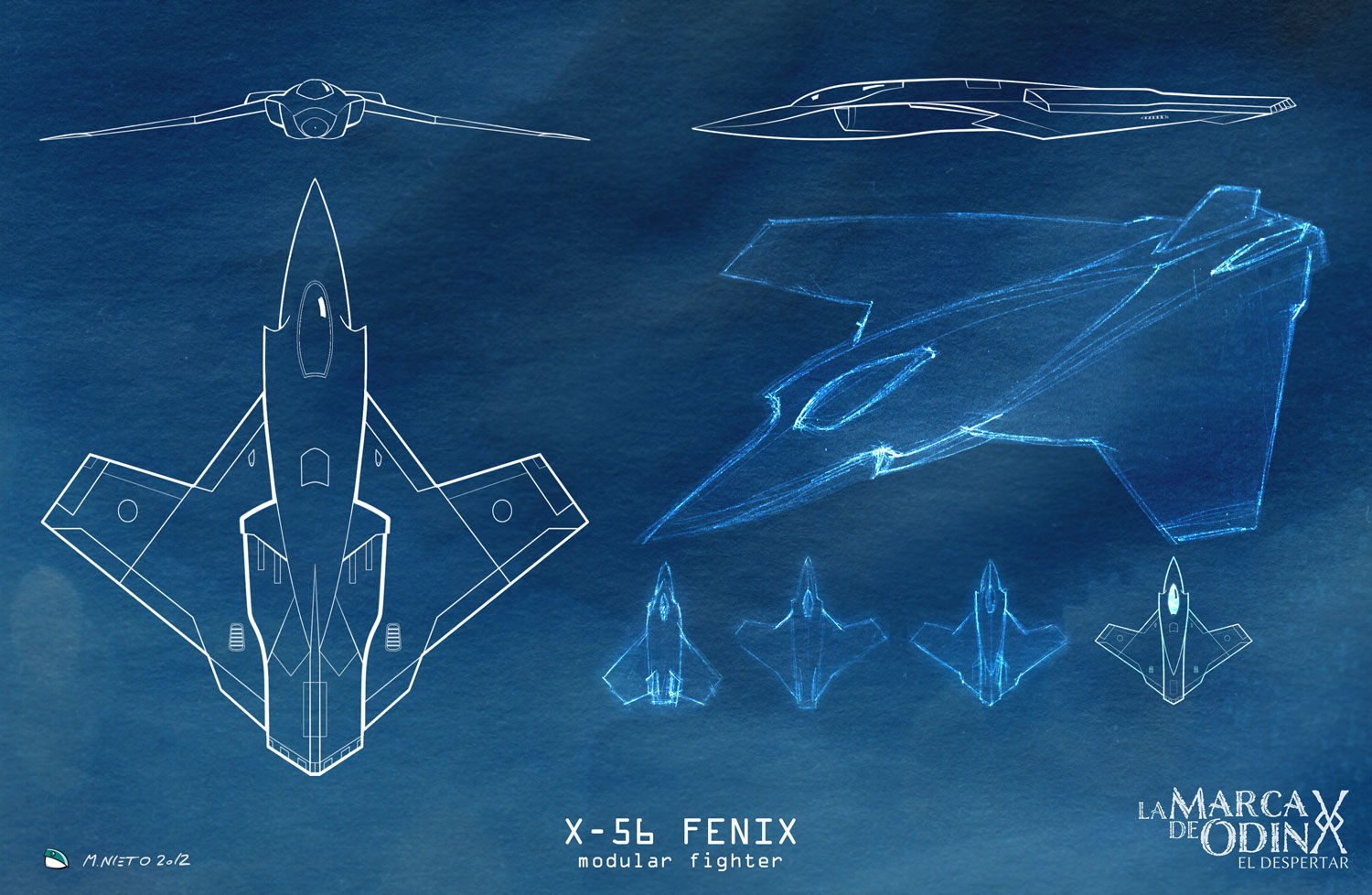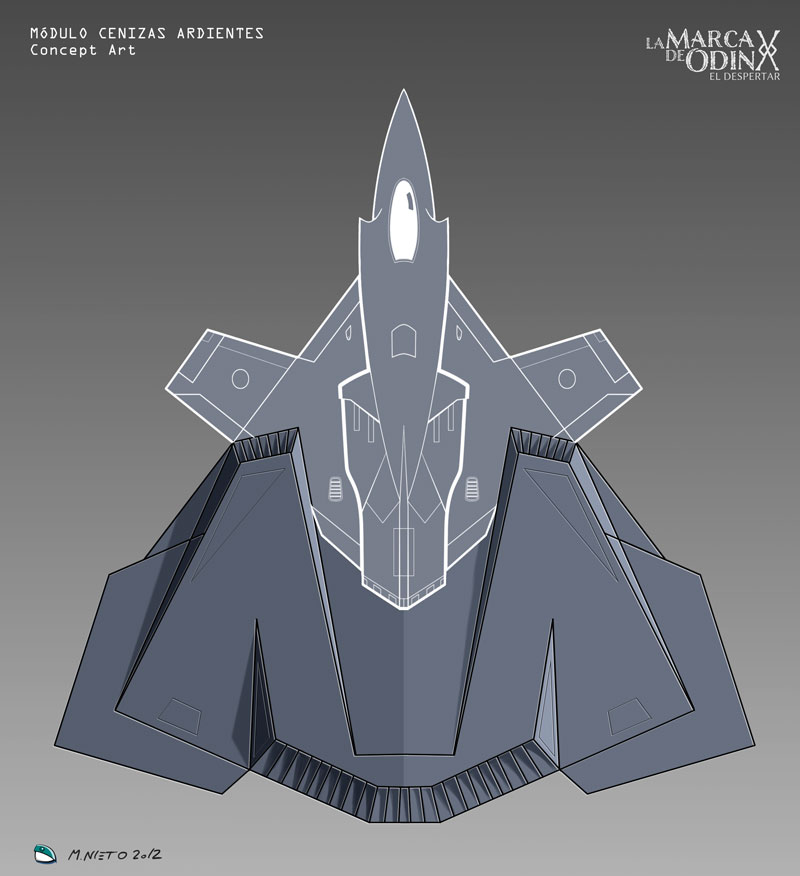In the fourth installment of the making of series of Behind the Mark of Odin we bring you another article by our illustrator, Manu Nieto, in which he describes the process of development and creation of the conceptual art of the X-56 Phoenix, the spectacular fighter experimental combat that appears in ‘Mark of Odin: The Awakening’. Below you can read the full article along with new images of his creative process.
“The most modern fighter jet ever designed to date. Heir to projects such as the X-44 Manta, it was a tailless aircraft, composed of a single wing, also shaped like a wedge.”
This is how the star vehicle of the US Air Force is presented to us in Mark of Odin. In addition to the extensive description of its weapons and operational capabilities throughout the book, there were a series of “Eyes only” indications and some graphic references, among them the aforementioned X-44, other single-wing fighters or even fictitious aircraft such as the Robotech fighters.

I was especially struck by the design of the F/A XX (1st photo), a Boeing concept for a sixth-generation fighter that had many elements in common with the X-56, such as its lack of a tail or the single wing. In the words of Xavier Marcé, the Phoenix had to be much more advanced than all of them. To make it look ultra-modern, I took that line and applied an old concept, the inverted swept wing.

The inverted wing is a Russian design that dates back to 1936, a concept that, despite its virtues, entailed numerous drawbacks as the technology of lightweight materials was not sufficiently developed at that time. So much so that barely a dozen models have been built with this configuration throughout the history of aviation. But one of the advantages of being a Concept Artist and not an Aeronautical Engineer is that you don’t have to worry about trifles like that (within limits, of course).
In the same way that for many vehicles such as ships or cars the profile is the optimal view to design, it is evident that an airplane shows its best side seen from above, which is why this is the view from which we begin to search for the desired line and the other views fold into the main one.

One of the most important points when approaching the Phoenix is that it had to be taken into account that it is a modular fighter, although it does not appear in this first installment, the X-56 must be designed to attach to the Burning Ashes module that has it. to place in orbit, that is why I made a quick sketch of what said module could be like and how it would be attached to the plane. Mainly to make sure that in addition to working as a stand-alone design, the X-56 could work with that addition.

Once the desired line is obtained in the three main views, an isometric perspective view is made, which is where we can clearly see the volumes and packaging that the prototype will have. Again from a pencil sketch, it is retouched on the computer to correct some proportions and inked, cleaning the line. In this phase, some details begin to appear, the shape of the air inlet nozzles is defined, and the a small tail that the initial sketch had.

From this point on, the plane begins to be given volume. I usually work with a flat background ink and apply a light tone and a shadow tone, with this practically any object is defined, then extreme shadows and highlights are added. (especially on the edges when it comes to mechanical objects). With some texture simulating metal sheets and some stickers (taken from current airplanes), the concept is finished.

